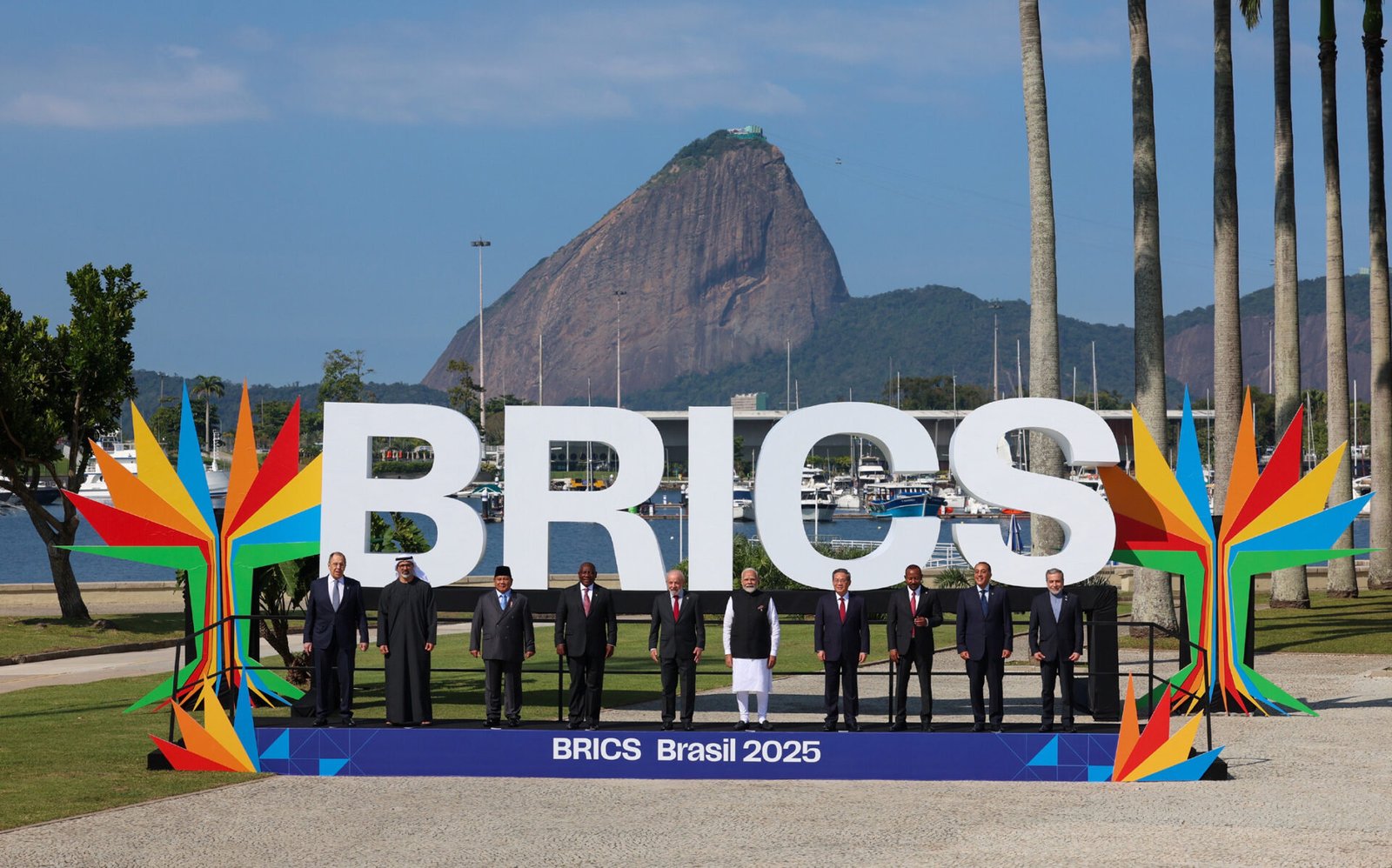Originally coined as an economic term, BRICS began as an informal group of emerging economies-Brazil, Russia, India, and China-and officially became an intergovernmental body in 2004. South Africa joined in 2010, expanding the group into BRICS. In 2024, four additional nations-Egypt, Ethiopia, Iran, and the United Arab Emirates-were welcomed into the fold, forming what is now referred to as BRICS+.
Today the bloc accounts for about 45% of the world’s total population and its GDP (measured in terms of purchasing power parity). This expansion has reignited global debates about the shifting balance of power, with some analysts arguing that BRICS+ could challenge the long-standing dominance of Western-led institutions.
While the bloc’s growing influence is undeniable, whether BRICS+ can transform global governance or if it is only a symbolic counterweight to the West remains a contested issue.
BRICS+ A Rising Counterweight to the West?
The coalition remains an informal grouping of non-Western economies that collaborate economically and diplomatically, yet it is not a formalized organization. One of BRICS’s central aims is to provide a counterweight to Western-dominated perspectives within influential multilateral bodies such as the UN Security Council, G7, and the World Bank.
The 2024 expansion had major geopolitical consequences. Comprising eleven member countries, BRICS+ currently accounts for almost half of the global population and more than a quarter of the world’s economic production – a strong indication of its growing demographic and economic influence.
The bloc is becoming more capable of impacting significant global issues, such as the tensions in Gaza and Ukraine, the worldwide economic framework, and the escalating rivalry between China and the West. Adding the UAE and Saudi Arabia – the two biggest Arab economies and engaged diplomatic negotiators – significantly boosts the group’s strategic stature.
On paper, BRICS+ has the potential to emerge as a powerful geopolitical and economic alliance. It already accounts for approximately 45% of the world’s population, produces around 30% of global oil, and contributes over 35% of the world’s GDP. However, whether this potential can be translated into a unified global influence remains an open question.
Cracks Beneath the Surface: Can BRICS+ Stay United?
BRICS+ continues to expand its global footprint but remains distant from achieving full unity among its member states. The relationship between BRICS+ members remains strained because of persistent bilateral conflicts together with diverging geopolitical agendas. The Grand Ethiopian Renaissance Dam dispute between Egypt and Ethiopia shows how regional conflicts persist among alliance members.
The border agreement between India and China along with the Modi-Xi meeting did not eliminate the fundamental suspicion that persists between these nations in the Himalayan border region. Notably, the absence of Xi Jinping from the 2025 BRICS Summit demonstrated his disinterest or disagreement, further questioning the group’s internal cohesion.
BRICS+ faces two opposing ideological pulls that create divisions within its membership. The members Russia and China and Iran interpret BRICS as an instrument to oppose Western hegemony because President Putin describes Western rules-based order as classic colonialism and Xi Jinping presents BRICS as an alternative to Western control. The members of BRICS including India, Brazil, and South Africa support reforms inside current international institutions such as the World Bank and the IMF to achieve better representation.
The fundamental disagreement between deconstructing the Western order and adjusting its limits, BRICS+ to present a unified global perspective thereby reducing its potential to act as a unified force in international politics
Symbolism or Substance? The Global Impact of BRICS+
Although the bloc members continue their debates about a unified BRICS currency no concrete currency system has been established. The BRICS nations have consistently shown interest in promoting trade through local currencies yet the U.S. dollar continues to dominate worldwide financial operations. The New Development Bank together with the regional payment system proposal demonstrates ambitions yet they fail to reach the influence threshold of Western financial systems.
The NDB functions as a BRICS-led institution that aims to substitute the World Bank and IMF yet, it currently struggles to overcome its obstacles. The organization’s restricted growth and influence result from internal governance problems, limited funding, and political disagreement among members have kept its scale and impact relatively modest.
BRICS members frequently recognize common development opportunities through digital innovation and artificial intelligence as well as sustainable development and climate change. The development of these areas remains slow and uneven because each BRICS member maintains specific national interests and geopolitical priorities.
The Global South has shown strong interest in BRICS+ because it symbolizes their desires for a fair international system. The organization faces challenges to its practical power because of world political complexities and member diversity.
Read More: China Rejects Trump’s Tariff Warning to BRICS
The expansion of BRICS+ members demonstrates how the Global South and developing nations desire to establish an international system that includes multiple power centers. Its expansion signals that countries around the world want to develop institutions that better reflect their diverse interests, rather than relying on Western-led organizations.
Ambition by itself fails to create real influence in the international arena. The bloc’s lack of internal unity combined with divergent national priorities and weak institutional frameworks prevents it from becoming an effective global unified entity. Although BRICS+ achieved success in changing the discourse, it still needs to transform the existing system it opposes.
Currently, the bloc functions as a symbolic counterweight instead of a strategic alternative because it needs to establish common goals and create enduring influence before it achieves full potential.
Minahil Khurshid
Minahil Khurshid is currently pursuing a Masters in Peace and Conflict Studies at the National University of Sciences and Technology (NUST). She has a keen interest in current affairs, public policy, and geopolitics.



